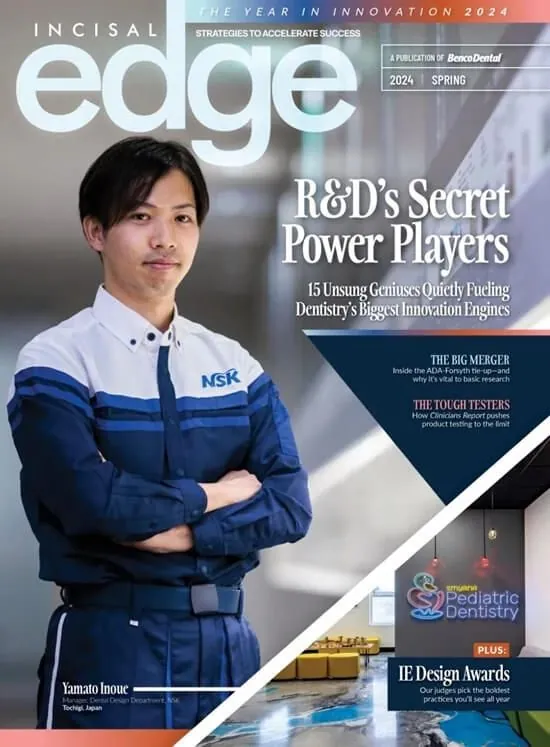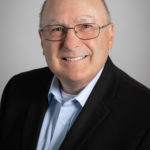HOWARD STRASSLER, DMD
Or does it? In many respects, the dental innovations of recent years have stopped the clock cold — but in a good way.
I RECENTLY HAD an epiphany about dentistry while reading, of all things, a copy of Sports Illustrated. A piece written by Steve Rushin about the nature of time in athletic contests got me thinking: Time, in the broadest sense of the word, is so critical to dentistry. How we use it constitutes the alpha and omega of practice management. Our appointment books, whether digital or paper, are broken into remorseless
10-, 15- and 20-minute segments.
Our time gets nibbled away throughout the day with patient treatments, hygiene checks, phone calls, lab slips to fill out, casts to inspect and much more. Now it’s summer and we’re all back on Daylight Saving Time. “Saving time” — are you kidding me? It marches on, savings be damned.
Well, maybe. A song on this topic comes to mind: the Rolling Stones’ 1963 classic “Time Is on My Side.” For eons, if you were a dentist, forget it — time was never on your side. (This still helps explain why Mick Jagger has so many more free hours than you do.) The materials we use, for example, all have working and setting times.
Fortunately, I’m not the only one in dentistry occupied with trying to save time: Manufacturers throughout the industry have been as well. Look how far we’ve come not just with dental drills — the first evidence of which goes back an astonishing 9,000 years — but with impression materials, too. In the past, even after the first dental plasters had been phased out, we always had to wait — and wait. Mix the impression material, apply in the mouth, around the teeth, hold the tray. Finally, in 1986, CEREC, the first digital system, hit the market, but as revolutionary as it was at the time, it was crude compared to what we’re able to work with today. Now we have elastomeric impression materials, with polyvinyl siloxanes the most popular. Miraculously, the impressions clock has stopped ticking: There’s no working time, no setting time.
The same is now largely true for evaluations, fabrication of restorations, development of diagnosis for treatment for implants, orthodontics, restorative esthetics, planning for oromaxillofacial surgical procedures and more.
For eons, if you were a dentist, forget it – time was never on your side. (This still helps explain why Mick Jagger has so many more free hours than you do.)
Time has long exerted its ruthless march for dentists of all kinds — those using film for radiographs, for example. The mechanics of capturing the radiographic image are no different for film than they are for digital, but from there the path diverges starkly. Before: Take the image on film, go into the darkroom and . . . wait. Now: Capture the image, and instantly there it is on the monitor. We no longer have to evaluate and diagnose from a picture the size of a postage stamp. We can share our HD wide-screen view with the patient; we can also apply filters to improve the image quality.
The impressions clock, miraculously, has stopped ticking: no working time, no setting time.
Dentists of a certain age will remember — during the Carter administration, say — documenting patient treatment with photographs. I still have all my clinical cameras going back to the late 1970s. Remember buying and loading film — 12, 24 or 36 exposures per roll? It could get almost comical: In many instances you wouldn’t send the roll out for processing until all the film was gone. Would that be tomorrow, next week, next month? Now digital photography offers instant gratification, to you and your patients alike.
All of these disruptions have been for the better. Time now really is on our side. (Yes, it is.) Consider, too, the art of composite resin placement. Such resins have been used in dentistry since the mid-1960s: Mix two pastes or a powder and liquid together, place in the tooth preparation and . . . wait. Hold that matrix strip steady for five minutes while you wait for the composite to set. Michael Buonocore invented and commercialized light curing at last in the 1970s with the Nuva Light, while improvements in composites, photoinitiators and adhesives have changed single-tooth restoration. Blue-light curing extends to lab procedures as well. No longer do we have to hold that matrix band for five minutes; in some cases composites can be light-cured in as little as five or 10 seconds.
Yes, all of us are still as busy as ever. But technology’s minute- and hour-saving capabilities are truly enhancing the practice of dentistry, enabling dentists to use their allotted moments each day more wisely, with the result being improved clinical outcomes. Look for more — much more — in the years ahead.
HOWARD STRASSLER, DMD is a professor and the director of operative dentistry at the University of Maryland School of Dentistry. He practices in Pikesville, Maryland.




